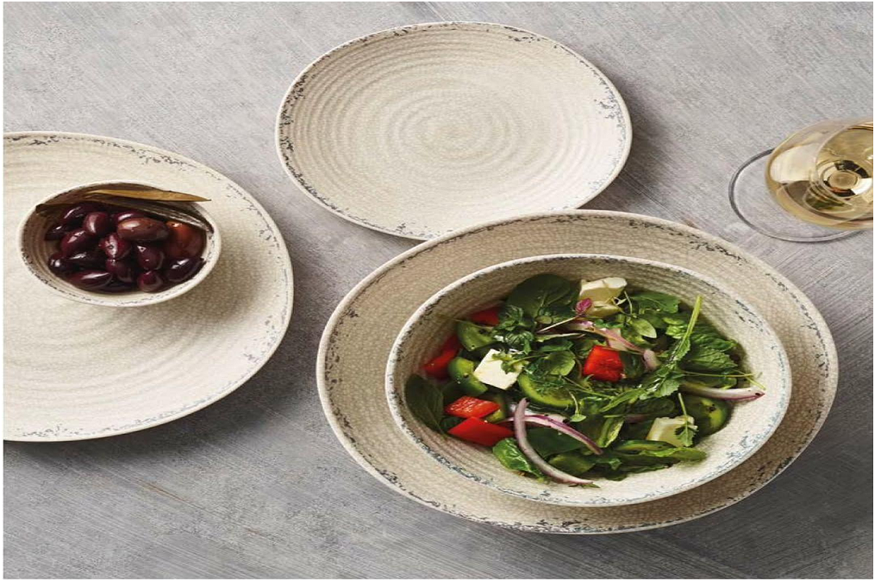Presentation in the hospitality industry is as important as taste. Restaurants and hotels are all looking for that which will make their dining experience memorable, and one that succeeds is custom ceramic plates UAE. They’re not plates but a reflection of the business’s personality, style, and attention to detail. Carefully crafted, ceramic tableware, bowls, and plates may be used to present any meal with presentation appeal, making first impressions on visitors last. By custom design, businesses may create their dinnerware to suit their business image so that each meal they serve is not just good-tasting but also pleasing to the eyes.
- Why Restaurants and Hotels Use Custom Ceramics: Restaurants and hotels utilize customized ceramics due to the fact that they give the business a special image and memorable dining experience. With bespoke ceramic tableware suppliers, companies are able to develop designs that exactly suit their company image. A personalized plate or bowl is not just practical—it’s a narrative and the backdrop for the entire meal. A high-end restaurant can have elegant, cultured designs to represent culture, but a bistro would use happier, more celebratory ceramics to match its lively atmosphere. These are decisions that affect the customers’ impression of the food, so every meal is a shared experience.
- Options Provided in Personalized Ceramic Tableware: Restaurants, provided they are willing to accommodate artisans and suppliers, have many possibilities like plates, bowls, cups, and serveware of multiple sizes, finishes, and forms. Even personalized ceramic plates with logo can be developed to match the overall look of the restaurant and menu style. Some use big plates to serve intricate main dishes, while others make use of small and trendy plates for tasting menus. Personalization can extend to color and texture of glaze and even customized edge profiles, so that every plate will be unique but be compatible with an otherwise identical complementary dining table setting.
- Advantages of Hand-Crafted Perfection and Hospitality-Level Longevity: Individualized ceramics can boast a spotless layering of prettiness and longevity. Handmade products will be marginally different in order to make each one more distinct and original. On the other hand, hospitality market ceramics are designed to be able to bear strict usage, regular washing, and small accidents without any loss of appeal. Through purchasing specially designed plates and bowls for restaurants from proven manufacturers, organizations can gain longevity at the expense of no appeal loss. This combination of attractiveness and longevity makes custom ceramics a worthwhile and cost-effective investment for hotels and restaurants.
- Adding Logos or Patterns to Coordinate with Themes and Menus: Adding designs that match the restaurant’s theme or menu is one of the most practical approaches to tableware personalization. This can be in the form of etched logos, hand-painted designs, or even incipient patterns reminiscent of the history of the food. A seafood restaurant, for instance, could employ wave-pattern plates, while a French bistro with upscale credentials could employ dainty flower patterns. Collaborating with talented producers of artisanal ceramic tableware ensures that such patterns are brought to life to perfection, balancing appearance and functionality. These aspects turn dining into an experience and solidify brand identity with each plate presented before a guest.
- The Process: Concept Design to Final Delivery: Ideation to final product completion, the process starts with interaction between the supplier and the business. At the concept stage, the restaurant provides information on its vision, theme, and style of menu. The supplier then produces prototypes, playing around with color, finish, and form. Once approved, production starts, with craftsmen making each piece by hand or employing specialized molds to gain uniformity. Checks at various stages see that every plate, bowl, or cup reaches expectations of beauty and durability. Last but not least, the finished tableware is packaged and dispatched to grace the dining room with elegance and class.
- Designing a Lasting Dining Experience: In addition to functionality, good tableware also adds to the eye appeal of every dish. A nice ceramic plate can visually frame the food to accentuate texture, color, and presentation techniques. A matte black plate, for instance, will create contrast to greens and reds and a white plate provides a clean background for vibrant sauces. In upscale establishments, this focus on presentation and plating can even become a driver of a diner’s impression of taste. Personalized ceramics provide restaurants with the ability to maintain control over consistency of presentation, so that each meal appears as wonderful as it tastes.
- The Tableware’s Role in Storytelling and Branding: Personalized ceramics are a soft but potent storytelling tool. They tell a restaurant’s history, values, culture, and cuisine without saying a word. For example, a green restaurant would employ local clay-made ceramics, but a five-star hotel would buy expensive, beautifully glazed minimalist pieces in order to attain a touch of class. All such choices become a part of the brand’s story so that the guests could become engaged more with the dining process. Through time, this sort of information generates customer loyalty since the clients not just recall the food but also the overall feeling generated by the table setting.
- Supporting Local Artisans: A selection of personalized ceramics is usually a question of direct contact with local artisans, thus promoting small business and hand craftsmanship. Certain artisans additionally implement sustainable practices, for instance, recycled materials or minimal environmental load glazes. This is an appealing offer to ecologically aware consumers, and the increasing popularity of sustainable hospitality standards. Restaurants also benefit from quicker turnaround times and improved management of production through purchasing locally. Handmade pottery is also typically an heirloom item, something mass-market imitations can never replicate, and thus an excellent long-term investment.
- Balancing Aesthetics with Practical Needs: Aesthetics are of course necessary, but so are practical needs in the case of the hospitality sector. Tableware should be easily manageable for waiters, stackable for space convenience, and heavy-duty dishwasher-safe without compromising its structure. Special designs can be made to fulfill these functional demands but provide aesthetic appeal. For instance, plates may be made lighter for convenience or edged-framed for reinforcement. This balance provides the tableware a way to enhance customer experience as well as optimize restaurant and hotel daily functioning.
Overall, whether one is the beauty of hand-painted plate ceramics or the utility of custom made bowls and plates for restaurants, each piece has a story that is brought home by the customer and recalled long after the meal has passed. For businesses that wish to make a lasting impact, an investment in custom ceramics is both a business and art choice.




